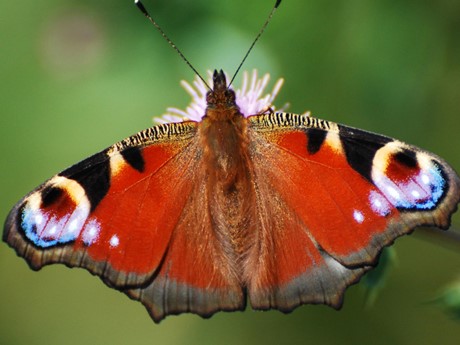Reflections on 20 years of recording with Nature’s Calendar
Valerie Hurst, 08/12/2020
The year 2040 seems a long way off, so far away that I do not even think of it. So it was the same for me at the millennium, I did not consider the year 2020. However, after seeing an advert in a newspaper asking for volunteers, I sent my first recordings to Nature’s Calendar in 2001.
I am still recording in 2020. I am so pleased to have been able to contribute 20 years of recordings on the timing of natural events to this important phenology database. Being part of the project has also helped me connect with wildlife near to me, spend time outdoors and learn more about nature.

Pedunculate oak is one of the trees that Valerie has been recording seasonal events for since 2001 (Photo: Valerie Hurst))

''I am particularly aware of acorns. The quantity that are produced by one tree is phenomenal, there are thousands on the oak I observe and if each acorn were to grow into a tree it would create a forest on its own. Just from one tree.'' Valerie Hurst (Photo: Valerie Hurst))
Back in 2001 my knowledge and understanding was limited and I started off recording a nearby oak, a beech tree and the arrival of swallows that nested on a neighbour’s house. Enjoying watching for these changes I looked at the phenology event list more thoughtfully and pin pointed other trees that I knew- a horse chestnut and a silver birch to name but two- and added them to my mental list of what to look out for. I moved house more than once and the list became different, with other trees and plants becoming more pronounced in this different environment.
Connecting to my local wildlife
Through the last years I have noticed and observed more and more things. Flowers started to register more clearly in a pattern of colour in my mind. The white of the snowdrops in January and February, the bright yellow celandine and blue of the bluebell, followed by purple lilac, then to pink then finally red flowers in mid-June.
I have also become more aware of insects too. The red tailed bumble bee is absolutely huge and makes a terrific noise. We have one that lives in our garden and appears every spring, about the time of the vernal equinox. I have also become aware of the queen wasp. This is another large insect that cannot be mistaken for a normal wasp. Flies appear at this time too and herald the swifts, swallows and house martins in mid-April, which feed off them on the wing.

Recording tree events isn't limited to those found in the woods and the countryside. Spotting the signs of seasonal changes in urban trees, as Valerie does with this silver birch, is just as valuable to Nature's Calendar (Photo: Valerie Hurst)
Why recording matters to me
There always something new to see in nature and even from where I live on the edge of town, I can witness lots of Nature’s Calendar events. This year, with the covid-19 restrictions in place, I have spent more time at home and found looking out for those first signs of the changing seasons made this time more tolerable.
As we drift towards winter I will record my observations on the changing colour of leaves on trees and when the trees are bare. I look forward to that first noticeable change in mid December when I first hear the song thrush as it sings its unique song and repeats each line 3 times.
Knowing each of my records is contributing to a database that’s used to study the impact of climate change on our wildlife makes these observations all the more rewarding. I’m certainly looking forward to recording with Nature’s Calendar for another 20 years.
See Valerie talking more about recording with Nature's Calendar in our short spring video.
Thank you
We would like to take this opportunity to thank Valerie for her incredible contribution and dedication to Nature's Calendar over the last 20 years. During this time Valerie has added almost 800 records to the database - quite a commitment, resulting in a hugely valuable resource.
Valerie has certainly given us all something to aspire to! We would also like to thank you, Valerie, for sharing your experience of recording with Nature's Calendar over the last 20 years and hope it inspires many others to begin and keep recording with us too.
Whether you're new to Nature's Calendar or have been recording for many years, thank you all for your valuable records. Please do keep them coming in as you spot the first signs of seasonal changes - spring is just around the corner!
